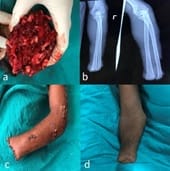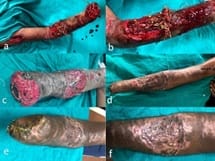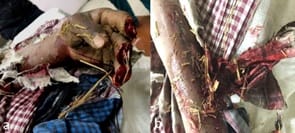A Prospective Study of Profile of Agricultural Orthopaedic Injuries in North India in a Tertiary Care Centre
Singh R.1, Arora K.2, More H.3*, Kaur K.4, Khanna M.5, Delair A.6
DOI: https://doi.org/10.17511/ijmrr.2021.i03.07
1 Roop Singh, Department of Orthopaedics, Pt BD Sharma PGIMS, Rohtak, Haryana, India.
2 Kunal Arora, Department of Orthopaedics, Pt BD Sharma PGIMS, Rohtak, Haryana, India.
3* Hemant More, Department of Orthopaedics, Pt BD Sharma PGIMS, Rohtak, Haryana, India.
4 Kiranpreet Kaur, Department Anaesthesia, Pt BD Sharma PGIMS, Rohtak, Haryana, India.
5 Mohit Khanna, Department of Orthopaedics, Pt BD Sharma PGIMS, Rohtak, Haryana, India.
6 Anas Delair, Department of Orthopaedics, Pt BD Sharma PGIMS, Rohtak, Haryana, India.
Background: Over time agriculture has transformed into an industry, both in scale and mechanization. Growing demand for agricultural yield and increasing mechanization has led to growth in the numbers of agricultural accidents and injuries causing significant morbidity and economical loss. Aim: To study the causes, patterns, outcomes of injuries due to agricultural accidents, their effect on the productivity of the victims, and to suggest possible remedial measures, a prospective study was undertaken. Methods: A total of 106 patients reporting agricultural injuries (AI) over 14 months in 2019-20 were enrolled and data was recorded on a pre-structured proforma. Results: With the preponderance of male victims, educational status, skill levels, lighting & climatic conditions, intoxication and fatigue were found to be major determinants in the causation of injuries with upper limbs being the predominantly involved part (75.47%) and most of the cases ended up requiring some form of surgery (88.68%). Agricultural machinery (56.60%) was the main cause of AI and Chaff Cutter Machine caused the maximum AI (37.73%). Amputations were the most common injuries sustained (47.16%). Agricultural injuries affected the range of motion of body parts (32.07%) and work (58.49%) & household activities (49.05%); thus impairing work efficiency and economy. Conclusion: The present study highlights the need for a robust surveillance and data analysis leading to better design of farming machinery and equipment, more relevant education and training systems, stronger legislations as well as a comprehensive rehabilitative program aimed at reducing the socio-economic burden caused by agricultural injuries.
Keywords: Agricultural injuries, Farming machinery, Amputation
| Corresponding Author | How to Cite this Article | To Browse |
|---|---|---|
| , Department of Orthopaedics, Pt BD Sharma PGIMS, Rohtak, Haryana, India. Email: |
Singh R, Arora K, More H, Kaur K, Khanna M, Delair A. A Prospective Study of Profile of Agricultural Orthopaedic Injuries in North India in a Tertiary Care Centre. Int J Med Res Rev. 2021;9(3):172-180. Available From https://ijmrr.medresearch.in/index.php/ijmrr/article/view/1275 |


 ©
© 

